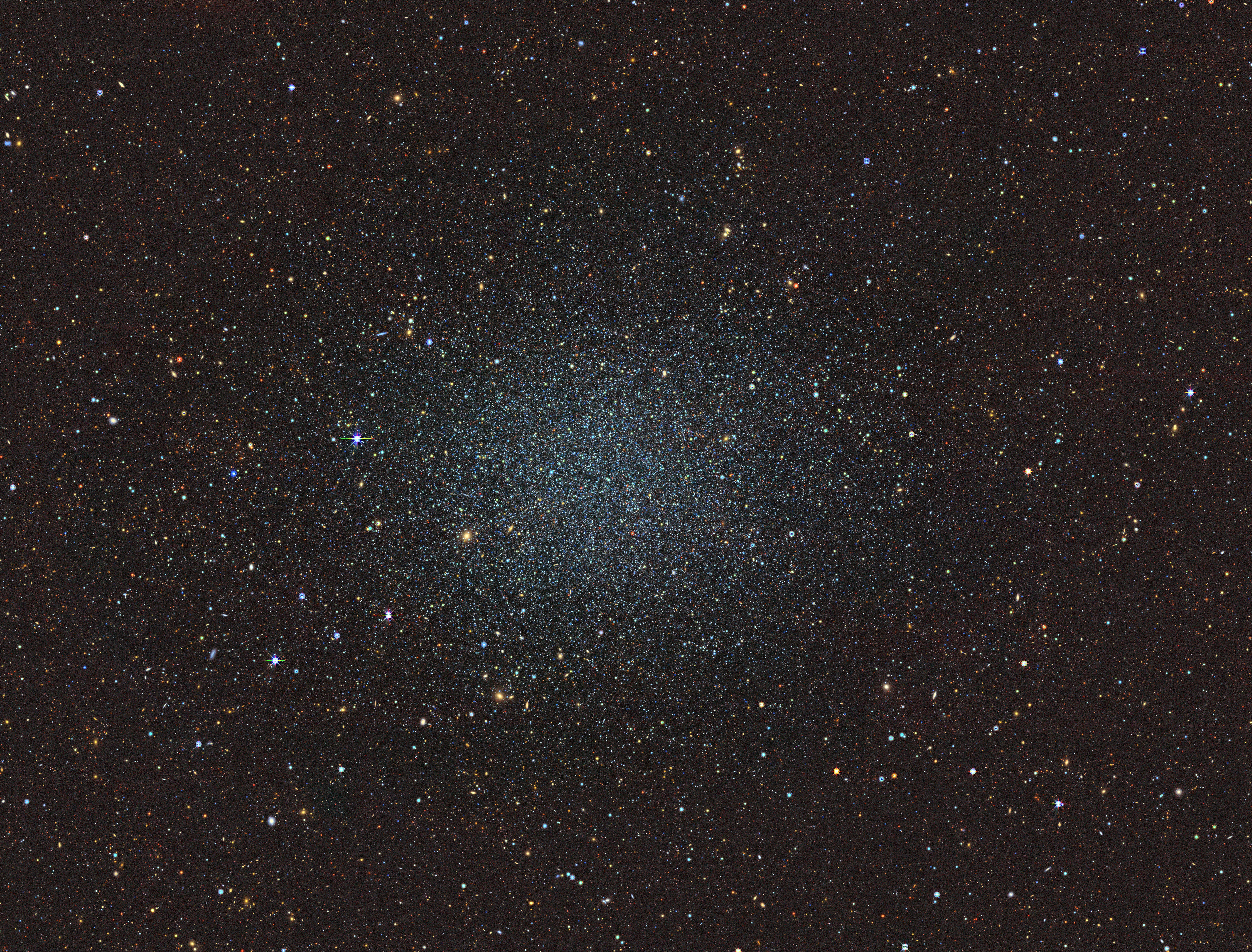
The Sculptor Dwarf Galaxy is one of the Milky Way’s dozens of known satellite galaxies. At roughly 300,000 light-years away, this dwarf elliptical galaxy (classified as dE3) was the first satellite of the Milky Way discovered telescopically, found by Harlow Shapley in 1937. (The Magellanic Clouds were known prehistorically, since they are easy naked-eye objects in the Southern Hemisphere.)
Like large galaxies, dwarfs may be spiral or barred spiral, elliptical, or irregular. They also vary in size and mass. The Sculptor Dwarf is a lightweight, coming in at only 30 million solar masses. M32, a satellite of the Andromeda Galaxy, is much a heftier dwarf elliptical galaxy with 3 billion solar masses. While that sounds large, consider that a normal-sized elliptical like M49 is 200 billion solar masses!
In 2017, astronomers published high-precision three-dimensional motions of stars in the Sculptor Dwarf — the first time this had been done for a dwarf galaxy. The positions of 100 stars were measured with the Hubble Space Telescope in 2002 and then 12 years later with ESA’s Gaia space observatory. The results showed the stars move preferentially in elongated radial orbits, indicating the presence of dark matter that increases toward the center of the galaxy.
Observing the Sculptor Dwarf is challenging but not impossible under dark skies and a good southerly latitude. It can be seen with a 6-inch telescope in southern U.S. skies. Look 4° due south of Alpha (α) Sculptoris. It’s nearly 9th magnitude, which sounds bright, but that light is spread over a piece of sky roughly the size of the Full Moon. Photographs show the stars are very slightly more concentrated toward the center, but there is nothing resembling a core.









